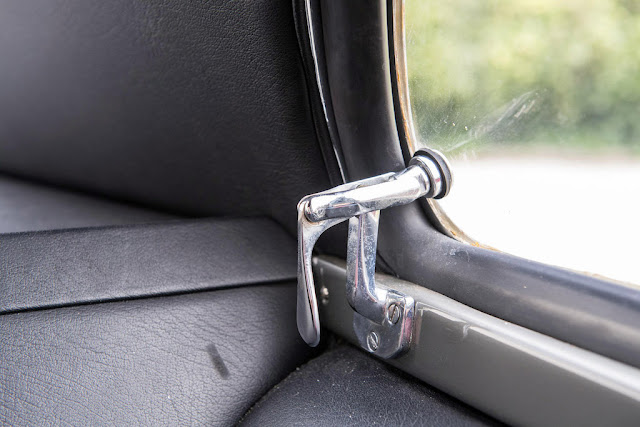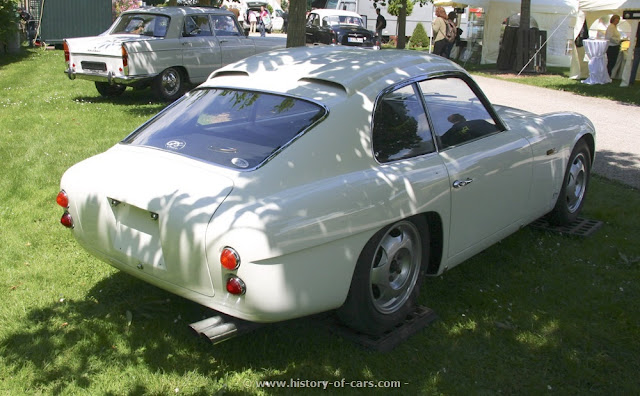With sales of the once very successful OSCA sports racers dwindling, the Maserati brothers were forced to look for other sources of income towards the end of the 1950s. The first fundamental change was an engine partnership with Fiat. In this arrangement, Fiat would manufacture a sophisticated twin-cam, four cylinder engine following an OSCA design. In return, the Maserati brothers would also receive complete engines at but a fraction of the cost compared to one built in-house. The foremost was the possibility to produce a brand new production car that could be offered for a relatively competitive price. Known as the 1600 GT this duly appeared at the 1960 Turin Motor Show.
The new OSCA 1600 GT was available with two different chassis configuration and no fewer than four engine specifications. All versions used the same and relatively light steel tubular chassis. The double wishbone suspension at the front and the disc brakes built in Italy under Dunlop license were also common components. At the rear, the basic version featured a live axle, while the more expensive, competition oriented models used fully independent double wishbones.
The 1600 GT's four cylinder engine was a further development of the existing design that had been successfully used in OSCA's sports racers for a decade. In basic trim, fitted with a single Weber carburettor, it produced around 95 bhp. Three twin-carburettor versions were also available with power ranging from 105 bhp to 140 bhp for the twin-spark variant. The 1.6 L engine was mated to a proprietary four-speed gearbox.
While the original show car was equipped with a Boneschi coupe body, OSCA would ultimately market the 1600 GT with a choice of Fissore or Zagato coachwork. Available with the 95 bhp and 105 bhp engines, the Fissore versions were less expensive than the competition oriented Zagatos. These featured a lightweight body with the signature double-bubble roofline. In the most potent 'GTS' trim, the Zagato Coupe also featured covered headlights and a much larger fuel tank for competition use.
Even though the 1600 GT was launched late in 1960, production did not start in earnest until 1962. Among the reasons for this lengthy delay were homologation issues of the competition cars. A vast majority of the 1600 GTs were bodied by Zagato, while in addition to Fissore, other companies like Touring and Morelli also clothed the OSCA. Officially 128 examples were built but some suggest that as little as 56 rolled off the line. Regardless, the OSCA 1600 GT remains as the last production car developed and built by the Maserati brothers. Especially the Zagato bodied examples offer a combination of looks and handling that is highly regarded today. (ultimatecarpage.com)
The new OSCA 1600 GT was available with two different chassis configuration and no fewer than four engine specifications. All versions used the same and relatively light steel tubular chassis. The double wishbone suspension at the front and the disc brakes built in Italy under Dunlop license were also common components. At the rear, the basic version featured a live axle, while the more expensive, competition oriented models used fully independent double wishbones.
The 1600 GT's four cylinder engine was a further development of the existing design that had been successfully used in OSCA's sports racers for a decade. In basic trim, fitted with a single Weber carburettor, it produced around 95 bhp. Three twin-carburettor versions were also available with power ranging from 105 bhp to 140 bhp for the twin-spark variant. The 1.6 L engine was mated to a proprietary four-speed gearbox.
While the original show car was equipped with a Boneschi coupe body, OSCA would ultimately market the 1600 GT with a choice of Fissore or Zagato coachwork. Available with the 95 bhp and 105 bhp engines, the Fissore versions were less expensive than the competition oriented Zagatos. These featured a lightweight body with the signature double-bubble roofline. In the most potent 'GTS' trim, the Zagato Coupe also featured covered headlights and a much larger fuel tank for competition use.
Even though the 1600 GT was launched late in 1960, production did not start in earnest until 1962. Among the reasons for this lengthy delay were homologation issues of the competition cars. A vast majority of the 1600 GTs were bodied by Zagato, while in addition to Fissore, other companies like Touring and Morelli also clothed the OSCA. Officially 128 examples were built but some suggest that as little as 56 rolled off the line. Regardless, the OSCA 1600 GT remains as the last production car developed and built by the Maserati brothers. Especially the Zagato bodied examples offer a combination of looks and handling that is highly regarded today. (ultimatecarpage.com)
(Photos from ruotevecchie.org, ultimatecarpage.com,
hemmings.com, hiveminer.com & history-of-cars.com,)



































































































